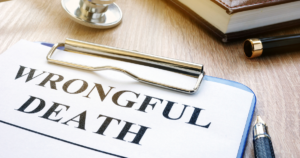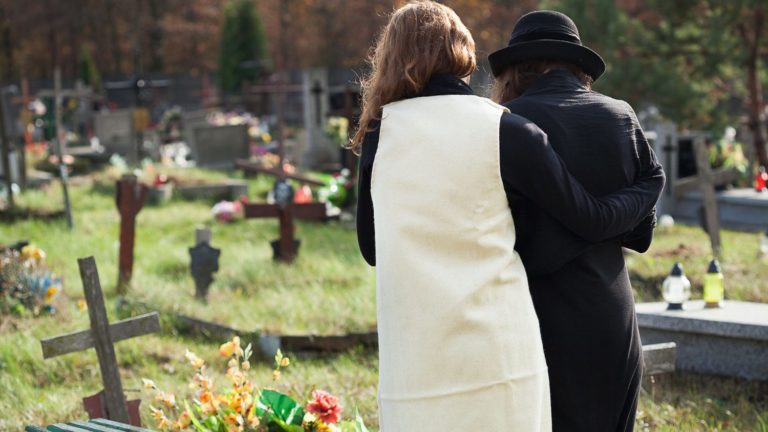New York law defines wrongful death as a term that describes the demise of an individual resulting from the negligence, misconduct, or recklessness of another.
Usually, such instances demand that the affected parties file for damages with a New York wrongful death lawyer. However, this is not always a ride in the park. You must get your best foot forward to prove a wrongful death case. Here is how to do it;

Filing for Wrongful Death Lawsuits
The person to sue for wrongful death varies depending on the state laws. Wrongful death claims fall under the common law jurisdiction against the person deemed liable for the death.
In some instances, immediate family members like parents, children, or spouses of the deceased can file the lawsuit. Other states may authorize a personal representative or executor of the decedent’s estate to file a wrongful death claim.
If you wish to sue for wrongful death, it is vital to contact a wrongful death lawyer who will advise you on your eligibility. You should book a consultation where the wrongful death attorney will also review and discuss other crucial facts in your case.
The lawyer will then conduct a deep investigation, which may include interviewing other people. They can talk to the defendant, witnesses, and the insurance company that may settle the potential damages.
After that, the wrongful death attorney will review your legal options and determine if you have a credible case. If so, they will file a lawsuit and begin the process that puts the defendant and court on notice. The rest of the process involves further investigation into the facts. This may continue until the trial unless both parties agree to settle the matter before then.
RELATED: How to Cope with a Loved One’s Wrongful Death
Elements of Wrongful Death
In a wrongful death case, attorneys from both parties work to achieve an agreed settlement that is satisfactory to either side. As a result, most wrongful death claims get settled outside the courtroom.
Wrongful deaths are civil cases; they do not require proof beyond a reasonable doubt. That’s only necessary in criminal cases. However, any evidence presented by the plaintiff must support their claim. The evidence tabled must prove that the defendant’s negligence caused the death.
The following three areas show negligence;
- Duty of Care
- Breach of Duty
- Cause of Death
Duty of Care
The initial stage of proving wrongful death shows that the defendants had an obligation to a duty of care to the deceased.
Duty of care requires that someone or an organization take all reasonable measures to halt actions that could harm others. However, the definition of this term may at times differ depending on the situation.
For instance, motorists must drive safely and protect other road users, including themselves, from injuries or death. It means that every motorist must adhere to traffic laws, not operate their automobile under the influence of alcohol or drugs and keep their vehicles in perfect condition.
Breach of Duty
The second stage involves establishing if the defendant breached the duty of care owed to the deceased. Parties under a wrongful death case examine all these situations. The results will determine whether or not the defendant was responsibly operating the automobile. If it shows that the motorists drove below the minimum required standards, they did not observe the duty of care.
In our example above, we can see how this element can come about. In the same case of a car accident, the plaintiff can establish a breach of duty by breaching the laid down obligation (such as overspeeding, failing to observe traffic lights, or driving under the influence).
In work-related circumstances, the plaintiff can show that the supervisor or employer failed to provide the disease with proper safety equipment or training. In cases of medical malpractice, the plaintiff can establish a breach of duty by proving that the medical staff committed medical malpractice leading to the death of the victim.
Some wrongful death suits may also result from product liability, where a person’s death occurs from a defective product. In such scenarios, an entity or family member to the decedent may file a wrongful death suit demanding compensation against the responsible party.
Proving these circumstances requires various evidence such as expert testimony, witness statements, and formal documents. A lawyer can collect such evidence throughout the discovery phase of litigation. The evidence collected becomes a crucial component in the wrongful death case.
Cause of Death
If the defendant breached the duty of care, the plaintiff must prove that the breach of duty leads to harm. In the above example, a blood test may reveal that the motorist was driving under the influence. It shows that the defendant did not observe any measures to mitigate the harm.
If the motorist hits and kills a pedestrian while driving drunk, the action directly kills the pedestrian. Every state has a specific blood-test limit a driver should not pass. The test result is enough evidence to prove the move contributed to the death.
Similarly, accident reports and statements from law enforcement, witness, and legal professionals can also prove that an individual’s actions resulted in the death. Death attorneys gather and examine evidence that they can directly link to the respective death cases.
Damages
Finally, the plaintiff must prove that they incurred damages from the victim’s passing. You can prove this by presenting evidence demonstrating the loss of economic support you suffered due to the death. The monetary damages may include funeral expenses and the final medical bills involved.
You also have the entitlement to recover non-economic damages suffered due to the death. You also get compensation for damages sustained by the diseased for their pain and suffering until their death. The damages in such instances may include;
- Hospitalization and medical expenses
- Burial costs and other fees arising from the funeral process
- Income loss
- Loss of parental guidance, protection, and inheritance regarding a spouse and other dependents
- Pain and suffering resulting from personal injury to the victim until decedent’s death

Supporting Evidence That May Prove Wrongful Death
The most challenging part to prove in a wrongful death lawsuit is that the misfortune would have happened if not for the negligence or wrongful act of the defendant. To demonstrate the four elements of wrongful death (Duty of care, Breach of duty of care, cause of death, and damages), the plaintiff must submit some specific evidence. The evidence that can hold water when proving the case here include;
- Eyewitness Statements
- Testimony from experts
- Police report
- Photographs and surveillance footages from accident scenes
- Medical records
- Work logs and records
- Safety guidelines

The Burden of Proof in a Wrongful Death
A wrongful death lawsuit is a civil case, not a criminal act, so the burden of proof is usually lower. To be successful in such cases, you must always win on the preponderance of evidence contrary to someone ‘being guilty beyond reasonable doubt’ as in the standard set in criminal cases.
Following up on a civil action for a wrongful death scenario involves several steps, including strategy development, investigation of wrongful death claims, talking to experts, speaking with eyewitnesses, and referring to the tort of law.
A typical wrongful death legal process encompasses demands, mediation, and probable settlement of wrongful death claims. If the parties fail to agree on these aspects, the plaintiff can file a lawsuit to escalate the case to trial.
The quantity of evidence does not matter when presenting a case of wrongful death action. Instead, you must focus more on the quality and credibility of that evidence. However, this requires a professional touch, so it would be best to hire a skilled wrongful death attorney to help you build a credible case. Professionals have the experience and knowledge needed to meet the burden of proof. Otherwise, you may lose the case and not recover the damages.
Selecting a lawyer is a crucial component for anyone who wants to win a wrongful death case. The skills, confidence, and reputation of the lawyer you hire will determine will boost your chances of getting a substantial settlement or proper award at the trial.
At Gregory Spektor & Associates, we pride ourselves on helping countless families get justice and fair compensation after losing a loved one. Our lawyers have the skill and experience to help you and your family in these trying times. We will strive to help you build a credible case, prove all the four elements of wrongful death and help you get the compensation you deserve within New York.






